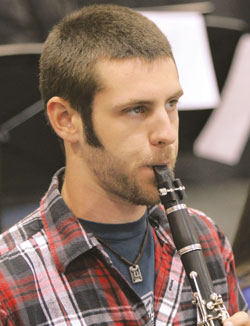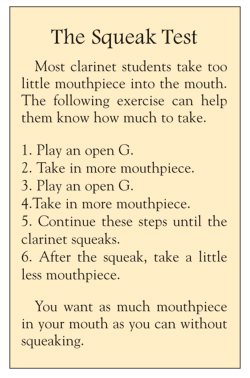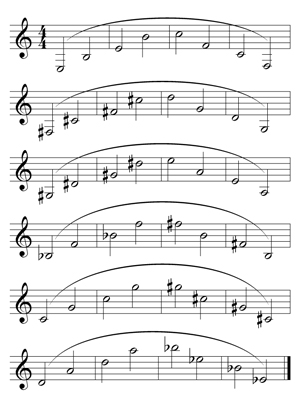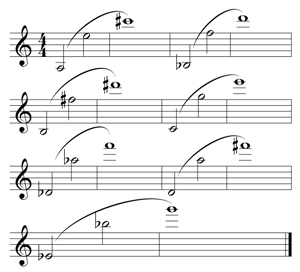
To improve the sound of a clarinet section quickly, check each player’s embouchure. Often an unfocused sound or intonation problems are cause by a poor embouchure.
The first thing to check is whether a student’s top teeth are placed on top of the mouthpiece. A quick test is to gently wiggle the clarinet barrel while he is playing. The mouthpiece should be difficult to move around if the student’s teeth are placed correctly. This is crucial in producing enough embouchure pressure on the reed to get a clear tone.
The second part of a good embou-chure is to have the bottom lip cover the bottom teeth. The bottom lip should be stretched along the bottom teeth as if you are putting on Chapstick. This firm lower  embouchure provides a solid foundation for the reed. Students often take the wrong amount of lower lip over their bottom teeth. An easy way to teach the proper amount of bottom lip is to have students identify the boundary lines of the lip. The outer boundary is simple, but few students know that the lip ends inside the mouth at the point where it feels wet. Have students take a finger and feel inside the lip to find this point. The bottom teeth should sit in between these two lines that outline the bottom lip.
embouchure provides a solid foundation for the reed. Students often take the wrong amount of lower lip over their bottom teeth. An easy way to teach the proper amount of bottom lip is to have students identify the boundary lines of the lip. The outer boundary is simple, but few students know that the lip ends inside the mouth at the point where it feels wet. Have students take a finger and feel inside the lip to find this point. The bottom teeth should sit in between these two lines that outline the bottom lip.
When the top teeth and bottom lip are set, the corners of the mouth close around the mouthpiece like a drawstring. An ideal clarinet embouchure will result in a tug-of-war between the muscles that form the syllables ee and oo. The ee syllable should assist the bottom lip in stretching across the bottom teeth, and saying oo helps the chin to be firm. A good analogy is to combine the ideas of drinking from a straw with putting on Chapstick.
Even if all these things are correct, it is still possible to have an unfocused sound on the clarinet. The low register is especially easy to play with an unfocused sound. To get a focused sound, students should play with the syllable ee. If the lower register is flat and unfocused and if high-register notes simply don’t come out, have students try saying, then whispering hee.
The best way to improve embou-chure strength is sustained practice through long tones. Each day I play a chromatic scale in whole notes at a tempo of a quarter note equals 60. My goal is to play at least sixteen counts, or four measures, before taking a new breath. This is also great practice for building lung capacity as well as embouchure strength. To practice smooth skips between registers I play my chromatic scale in intervals of fifths and fourths.

Another good exercise is a register change warmup. If each note plays with ease, I know that everything is correct. Each set of slurred notes is based on the same fingering. The register key moves from the chalumeau to the clarion register, and the removal of the first finger produces the altissimo notes. Each step in the pattern is slurred and should easily speak. I have used this with great success with young students who had never played above high C. Advanced students can try this exercise without changing fingerings. Each note may be tongued, but the fingers should remain fingering the lowest note.

Embouchure is the building block of such advanced clarinet skills as rapid articulation and an expanded high register. Students who have this correct will have a much easier time with these and sound much better as wel






